Growth and Dielectric Properties of Ta-Doped La2Ti2O7 Single Crystals
Abstract
:1. Introduction
2. Experimental Details
3. Result and Discussion
4. Conclusions
Acknowledgments
Author Contributions
Conflicts of Interest
References
- Turner, R.; Fuierer, P.; Newnham, R.; Shrout, T. Materials for high-temperature acoustic and vibration sensors: A review. Appl. Acoust. 1994, 41, 299–324. [Google Scholar] [CrossRef]
- Damjanovic, D. Materials for high temperature piezoelectric transducers. Solid State Mater. Sci. 1998, 3, 469–473. [Google Scholar] [CrossRef]
- Zhang, S.J.; Xia, R.; Lebrun, L.; Anderson, D.; Shrout, T.R. Piezoelectric materials for high power, high temperature applications. Mater. Lett. 2005, 59, 3471–3475. [Google Scholar] [CrossRef]
- Zhang, S.J.; Yu, F.P. Piezoelectric materials for high temperature sensors. J. Am. Ceram. Soc. 2011, 94, 17–34. [Google Scholar] [CrossRef]
- Zhang, S.J.; Frantz, E.; Xia, R.; Everson, W.; Randi, J.; Snyder, D.; Shrout, T. Gadolinium calcium oxyborate piezoelectric single crystals for ultra-high temperature (>1000 °C) applications. J. Appl. Phys. 2008, 104, 084103. [Google Scholar] [CrossRef]
- Zhang, S.J.; Fei, Y.; Frantz, E.; Snyder, D.; Chai, H.; Shrout, T. High-temperature piezoelectric single crystal ReCa4O(BO3)3 for sensor applications. IEEE Trans. Ultrason. Ferroelectr. Freq. Control 2008, 55, 2703–2708. [Google Scholar] [CrossRef] [PubMed]
- Costa, S.; Li, M.; Frade, J.; Sinclair, D.C. Modulus spectroscopy of CaCu3Ti4O12 ceramics: Clues to the internal barrier layer capacitance mechanism. RSC Adv. 2013, 3, 7030–7036. [Google Scholar] [CrossRef]
- Yamamoto, J.K.; Bhalla, A.S. Piezoelectric properties of layered perovskite A2Ti2O7 (A = La and Nd) single-crystal fibers. J. Appl. Phys. 1991, 70, 4469. [Google Scholar] [CrossRef]
- Nanamatsu, S.; Kimura, M.; Doi, K.; Matsushita, S.; Yamada, N. A new ferroelectric: La2Ti2O7. Ferroelectrics 1974, 8, 511–513. [Google Scholar] [CrossRef]
- Lichtenberg, F.; Herrnberger, A.; Wiedenmann, K. Synthesis, structural, magnetic and transport properties of layered perovskite-related titanates, niobates and tantalates of the type AnBnO3n+2, A’Ak−1 BkO3k+1 and AmBm−1O3m. Prog. Solid State Chem. 2008, 36, 253–387. [Google Scholar] [CrossRef]
- Lichtenberg, F.; Herrnberger, A.; Wiedenmann, K.; Mannhart, J. Synthesis of perovskite-related layered AnBnO3n+2 = ABOx type niobates and titanates and study of their structural, electric and magnetic properties. Prog. Solid State Chem. 2001, 29, 1–70. [Google Scholar] [CrossRef]
- Kimura, M.; Nanmatsu, S.; Doi, K.; Matsushita, S.; Takahashi, M. Electrooptic and piezoelectric properties of La2Ti2O7 single crystal. Jpn. J. Appl. Phys. 1972, 11, 904. [Google Scholar] [CrossRef]
- Takahashi, J.; Kageyamal, K.; Kodaira, K. Microwave dielectric properties of lanthanide titanate ceramics. Jpn. J. Appl. Phys. 1993, 32, 4327–4331. [Google Scholar] [CrossRef]
- Paul, A.F.; Robert, E.N. La2Ti2O7 ceramics. J. Am. Ceram. Soc. 1991, 74, 2876–2881. [Google Scholar]
- Yan, H.X.; Ning, H.P.; Kan, Y.; Wang, P.; Reece, M.J. Piezoelectric ceramics with super-high curie points. J. Am. Ceram. Soc. 2009, 92, 2270–2275. [Google Scholar] [CrossRef]
- Atuchin, V.V.; Gavrilova, T.A.; Grivel, J.C.; Kesler, V.G. Electronic structure of layered ferroelectric high-k titanate La2Ti2O7. J. Phys. D 2009, 42, 035305. [Google Scholar] [CrossRef]
- Fasquelle, D.; Carru, J.C.; Le Gendre, L.; Le Paven, C.; Pinel, J.; Cheviré, F.; Tessier, F.; Marchand, R. Lanthanum titanate ceramics: Electrical characterizations in large temperature and frequency ranges. J. Eur. Ceram. Soc. 2005, 25, 2085–2088. [Google Scholar] [CrossRef]
- Gao, Z.; Wu, L.; Lu, C.; Wei, G.; Zhang, T.; Liu, G.; Xie, Q.; Li, M. The anisotropic conductivity of ferroelectric La2Ti2O7 ceramics. J. Eur. Ceram. Soc. 2017, 37, 137–143. [Google Scholar] [CrossRef]
- Orum, A.; Takatori, K.; Hori, S.; Ikeda, T.; Yoshimura, M.; Tani, T. Atomic force microscopy surface analysis of layered perovskite La2Ti2O7 particles grown by molten flux method. Jpn. J. Appl. Phys. 2016, 55, 08NB08. [Google Scholar] [CrossRef]
- Kim, H.G.; Hwang, D.W.; Bae, S.W.; Jung, J.H.; Lee, J.S. Photocatalytic water splitting over La2Ti2O7 synthesized by the polymerizable complex method. Catal. Lett. 2003, 91, 193–198. [Google Scholar] [CrossRef]
- Hwang, D.W.; Kim, H.G.; Kim, J.; Cha, K.Y.; Kim, Y.G.; Lee, J.S. Photocatalytic water splitting over highly donor-doped (110) layered perovskites. J. Catal. 2000, 193, 40–48. [Google Scholar] [CrossRef]
- Hwang, D.W.; Cha, K.; Kim, Y.J.; Kim, H.G.; Bae, S.W.; Lee, J.S. Photocatalytic degradation of CH3Cl over a nickel-loaded layered perovskite. Ind. Eng. Chem. Res. 2003, 42, 1184–1189. [Google Scholar] [CrossRef]
- Cai, X.; Zhang, J.; Mamoru, F.; Tetsuro, M. Graphitic-C3N4 hybridized N-doped La2Ti2O7 two-dimensional layered composites as efficient visible-light-driven photocatalyst. Appl. Catal. B 2017, 202, 191–198. [Google Scholar] [CrossRef]
- Li, C.C.; Khaliq, J.; Ning, H.P.; Wei, X.Y.; Yan, H.Y.; Reece, M.J. Study on properties of tantalum-doped La2Ti2O7 ferroelectric ceramics. J. Adv. Dielectr. 2015, 5, 1550005. [Google Scholar] [CrossRef]
- Gerson, R. Variation in ferroelectric characteristics of lead zirconate titanate ceramics due to minor chemical modifications. J. Appl. Phys. 1960, 31, 188. [Google Scholar] [CrossRef]
- Oh, Y.W.; Kim, H.; Baek, K.H.; Do, L.M.; Lee, G.W.; Kang, C.M. Effect of post-annealing on low-temperature solution-processed high-performance indium oxide thin film transistors. Sci. Adv. Mater. 2018, 10, 518–521. [Google Scholar] [CrossRef]
- Shannon, R.D. Revised effective ionon radii and systematic studies of interatomic distances in halides and chalcogenides. Acta Crystallogr. 1976, 32, 751–767. [Google Scholar] [CrossRef]
- Trukhanov, S.V.; Trukhanov, A.V.; Turchenko, V.A.; Trukhanov, A.V.; Trukhanova, E.L.; Tishkevich, D.I.; Ivanov, V.M.; Zubar, T.I.; Salem, M.; Kostishyn, V.G.; et al. Polarization origin and iron positions in indium doped barium hexaferrites. Cream. Int. 2018, 44, 290–300. [Google Scholar] [CrossRef]
- Fiedziuszko, S.J.; Holme, S. Dielectric resonators raise your high-Q. IEEE Microw. Mag. 2001, 2, 50–60. [Google Scholar] [CrossRef]
- Wang, C.C.; Wang, J.; Sun, X.H.; Liu, L.N.; Zheng, J.; Cheng, C. Oxygen-vacancy-relaxated dielectric relaxation in Na0.5K0.5NbO3. Solid State Commun. 2014, 179, 29–33. [Google Scholar] [CrossRef]
- Wang, C.C.; Cui, Y.M.; Zhang, L.W. Dielectric properties of TbMnO3 ceramics. Appl. Phys. Lett. 2007, 90. [Google Scholar] [CrossRef]
- Wang, C.C.; Zhang, L.W. Oxygen-vacancy-related dielectric anomaly in CaCu3Ti4O12: Post-sintering annealing studies. Phys. Rev. B 2006, 74. [Google Scholar] [CrossRef]
- Wang, C.C.; Zhang, M.N.; Xia, W. High-temperature dielectric relaxation in Pb(Mg1/3Nb2/3)O3–PbTiO3 single crystals. J. Am. Ceram. Soc. 2013, 96, 1521–1525. [Google Scholar] [CrossRef]
- Liu, L.N.; Wang, C.C.; Lei, C.M.; Li, T.; Wang, G.J.; Sun, X.H.; Wang, G.J.; Huang, S.G.; Li, Y.D.; Wang, H. Relaxor- and phase-transition-like behaviors in ZnO single crystals at high temperatures. Appl. Phys. Lett. 2013, 102. [Google Scholar] [CrossRef]
- Ye, J.L.; Wang, C.C.; Ni, W.; Sun, X.H. Dielectric properties of ErFeO3 ceramics over a broad temperature range. J. Alloy. Compd. 2014, 617, 850–854. [Google Scholar] [CrossRef]
- Zhang, C.; Wang, X.; Wang, Z.; Yan, H.; Li, H.; Li, L. Dielectric relaxation, electric modulus and ac conductivity of Mn-doped YFeO3. Ceram. Int. 2016, 42, 19461–19465. [Google Scholar] [CrossRef]
- Zhang, N.; Li, Q.J.; Huang, S.G.; Yu, Y.; Zheng, J.; Cheng, C.; Wang, C.C. Dielectric relaxations in multiferroic La2Ti2O7 ceramics. J. Alloy. Compd. 2015, 652, 1–8. [Google Scholar] [CrossRef]
- Li, T.; Wang, C.C.; Lei, C.M.; Sun, X.H.; Wang, G.J.; Liu, L.N. Conductivity relaxation in NiTiO3 at high temperatures. Curr. Appl. Phys. 2013, 13, 1728–1731. [Google Scholar] [CrossRef]
- Deng, G.C.; Li, G.R.; Ding, A.L.; Yin, Q.R. Evidence for oxygen vacancy inducing spontaneous normal-relaxor transition in complex perovskite ferroelectrics. Appl. Phys. Lett. 2005, 87. [Google Scholar] [CrossRef]
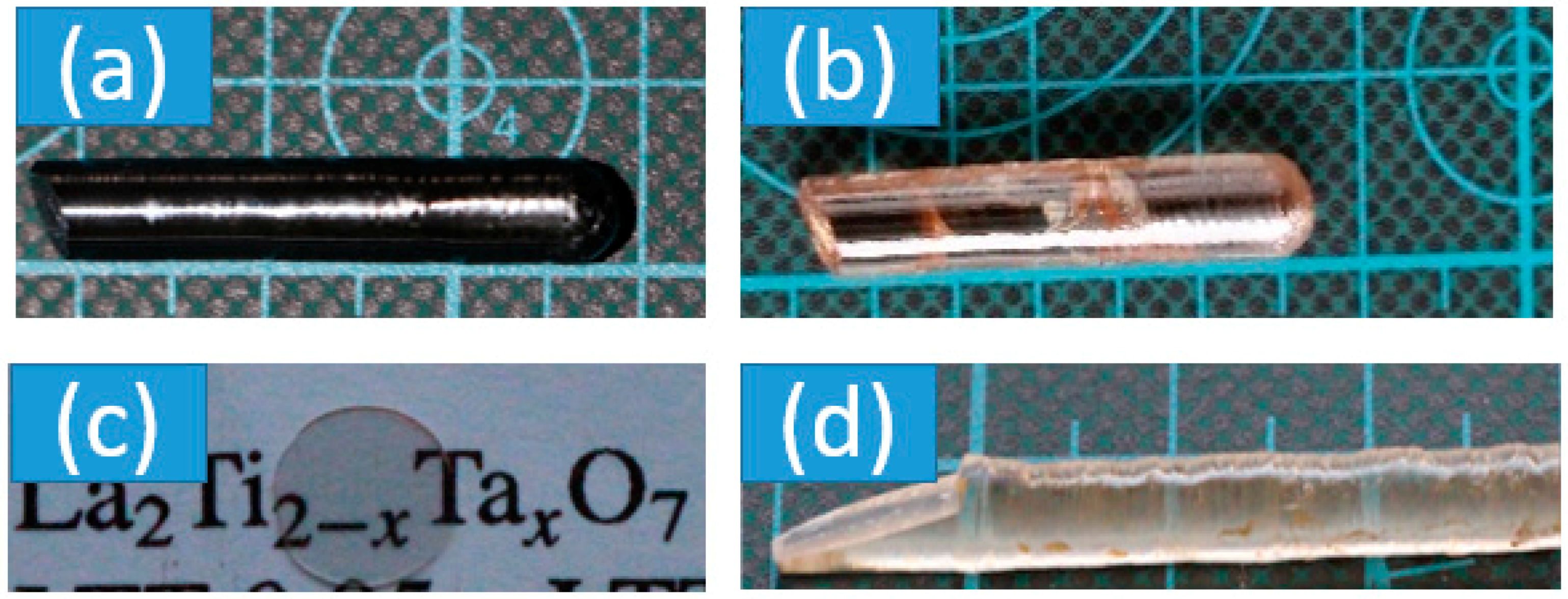
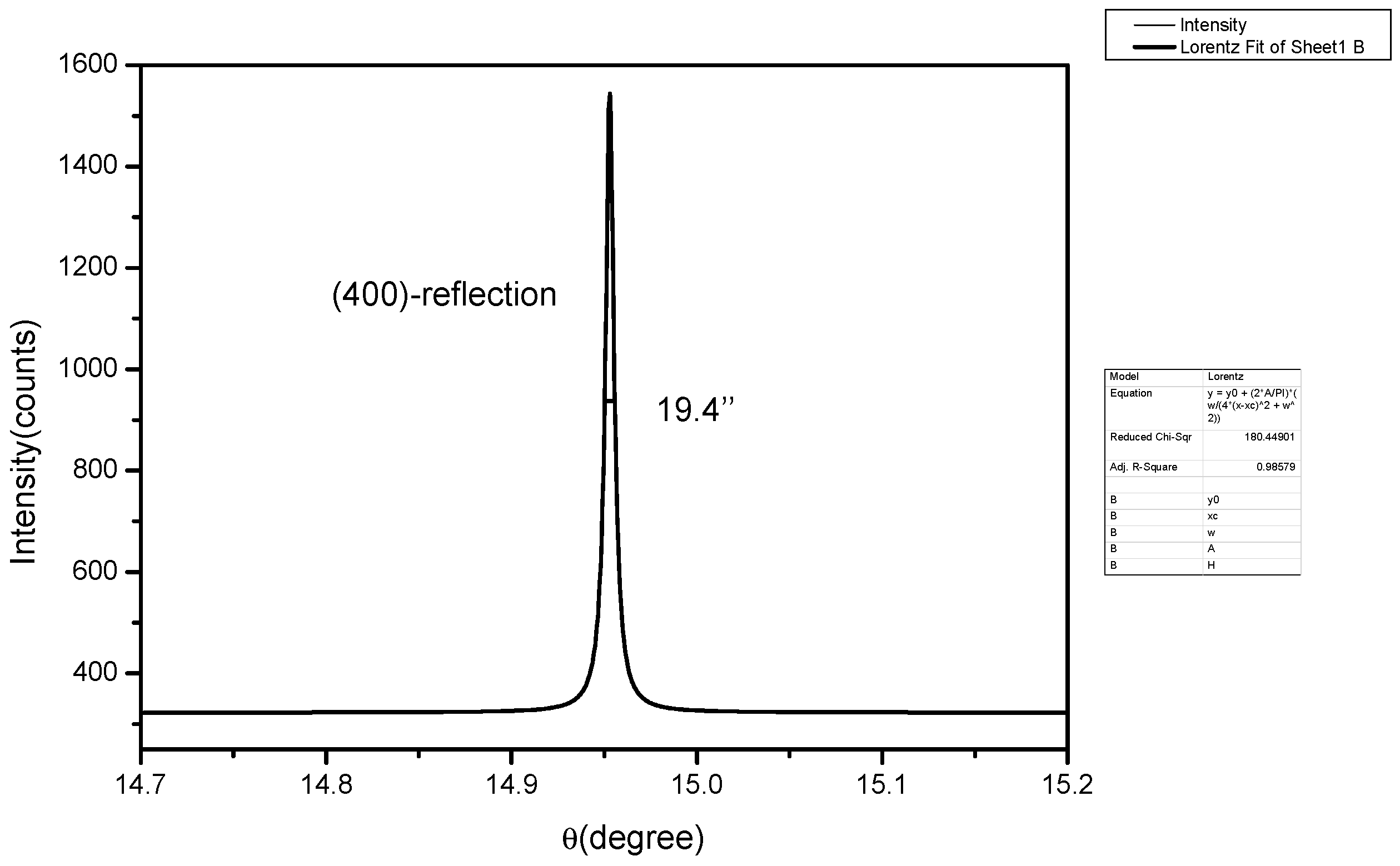
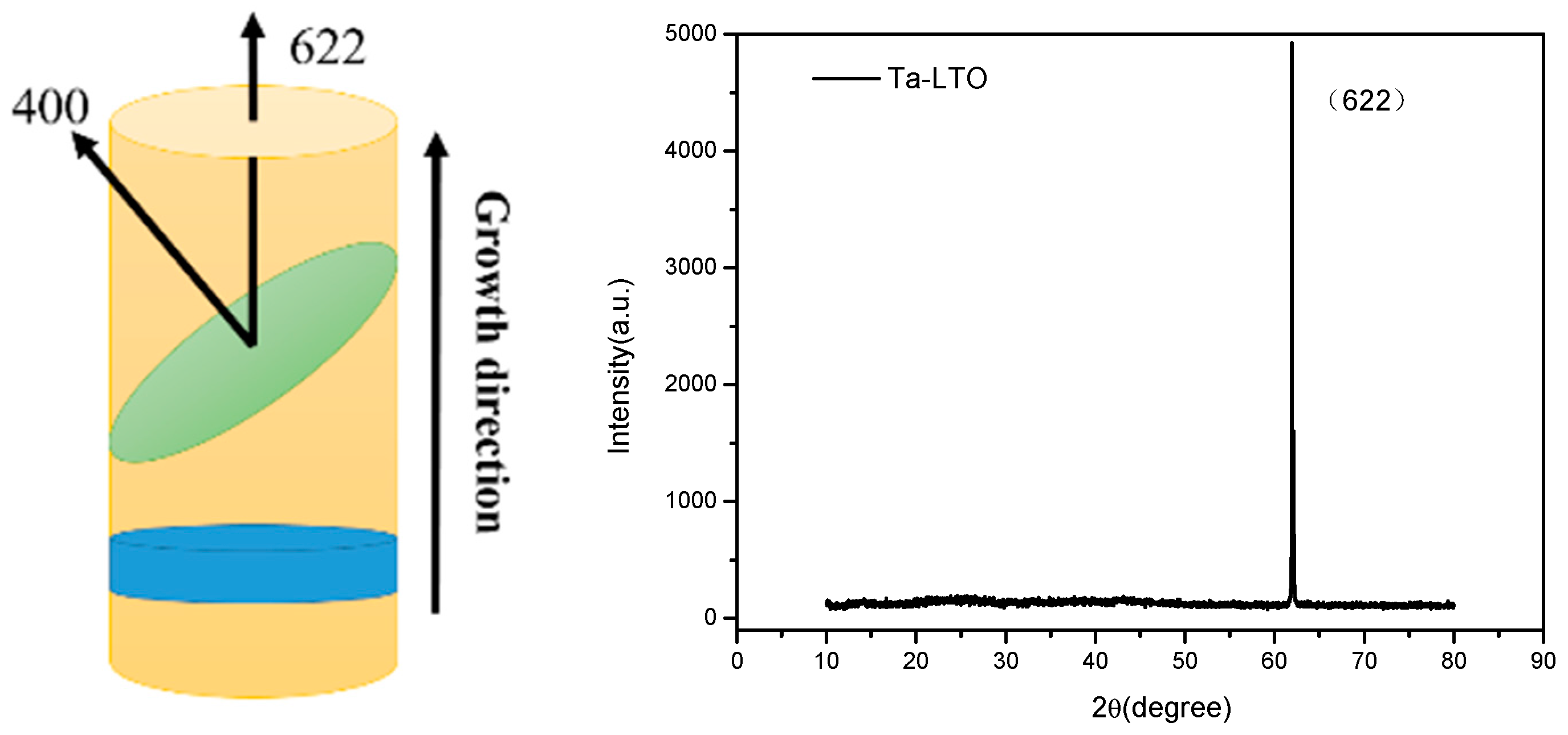
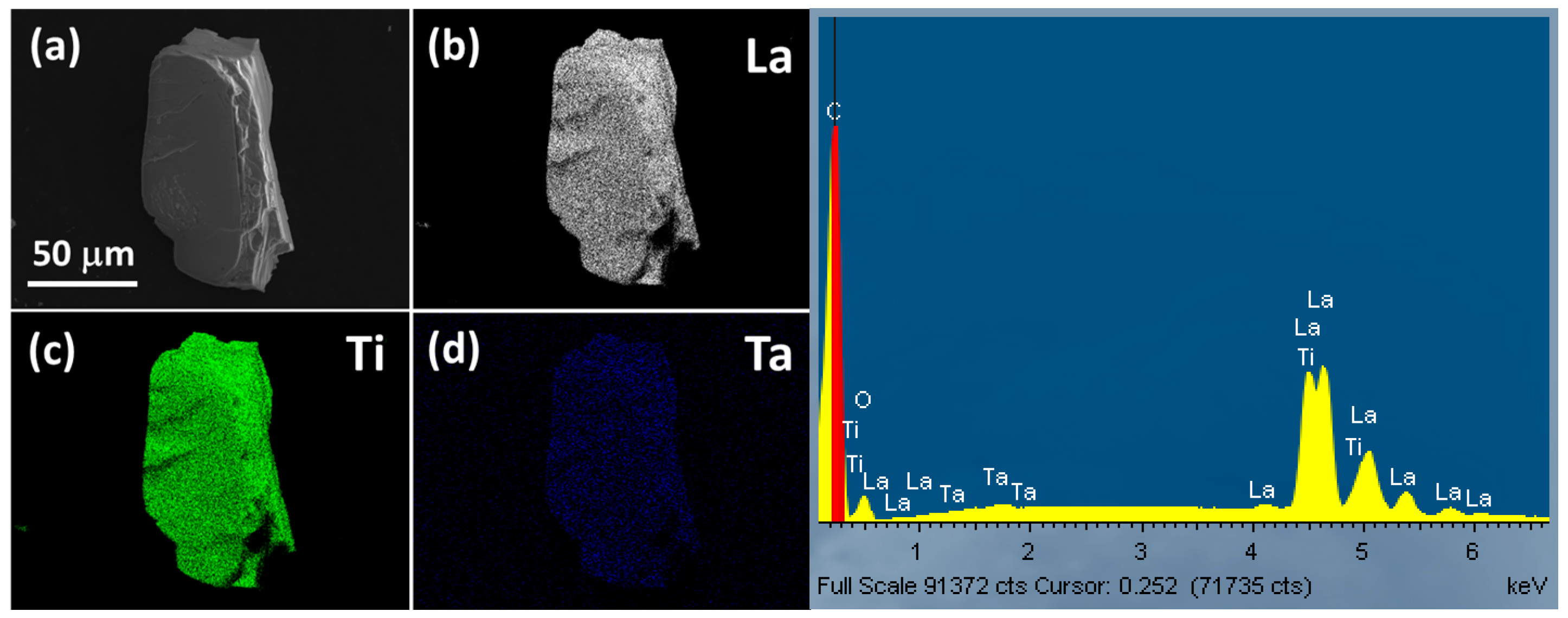
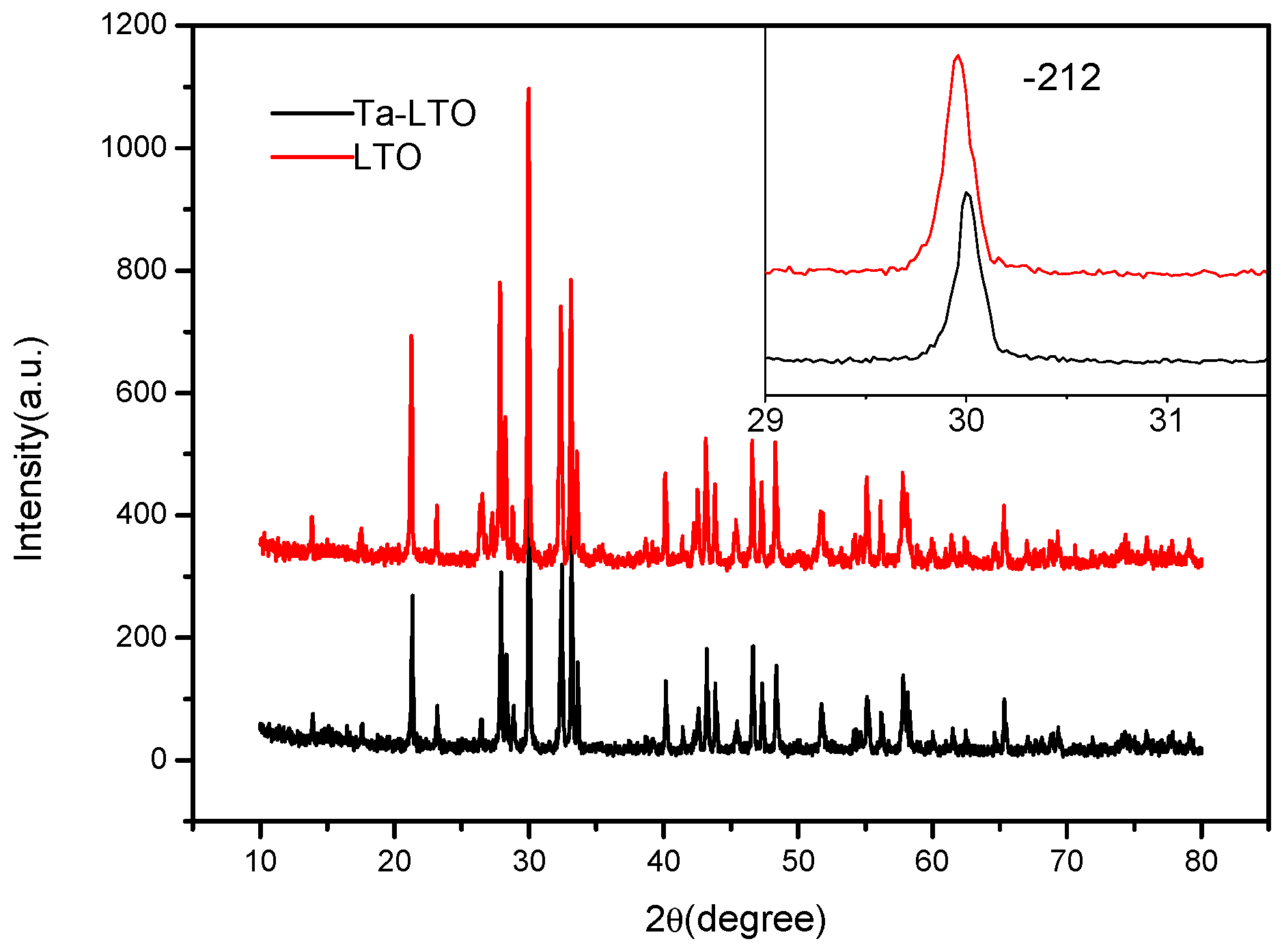
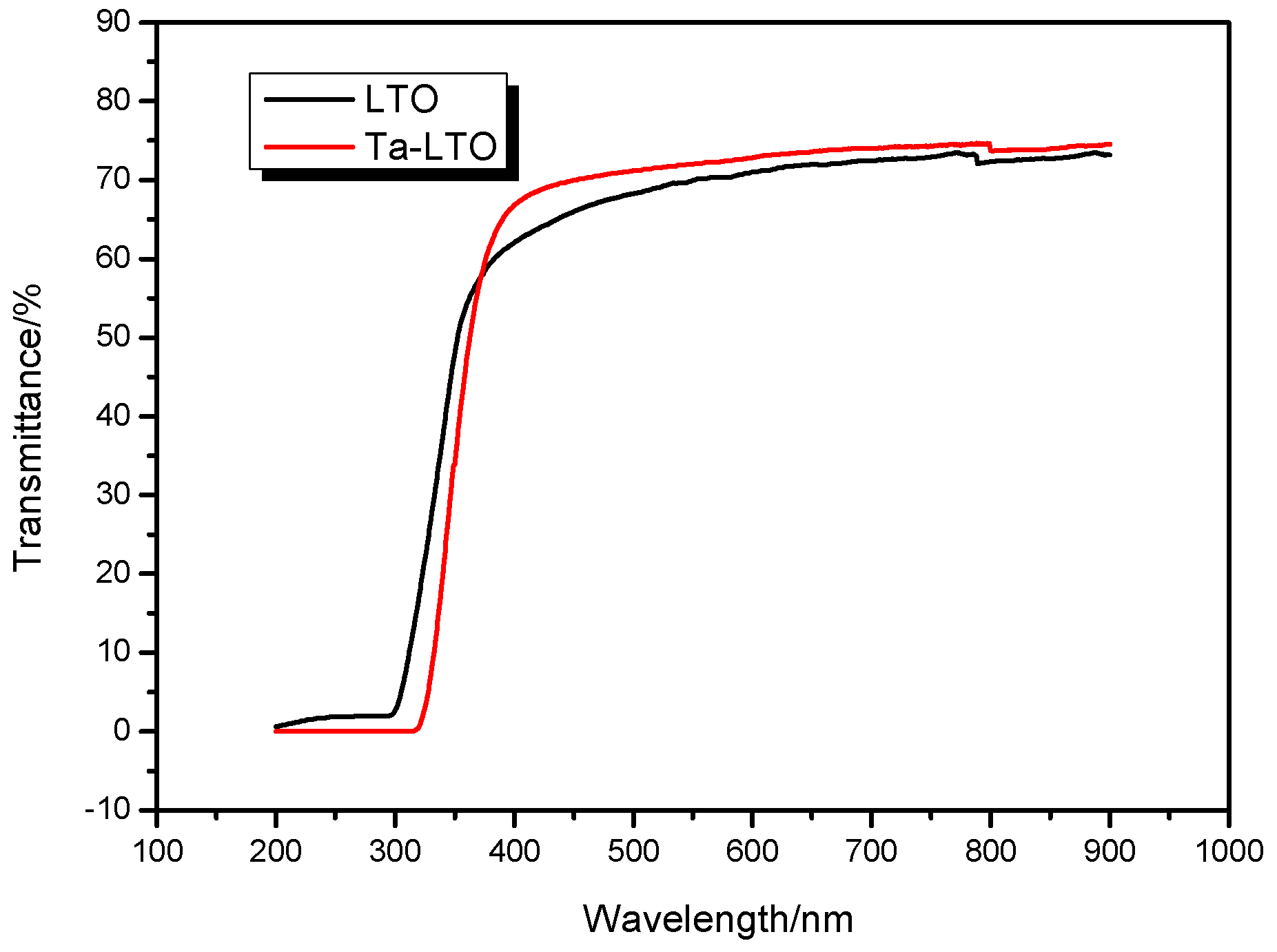


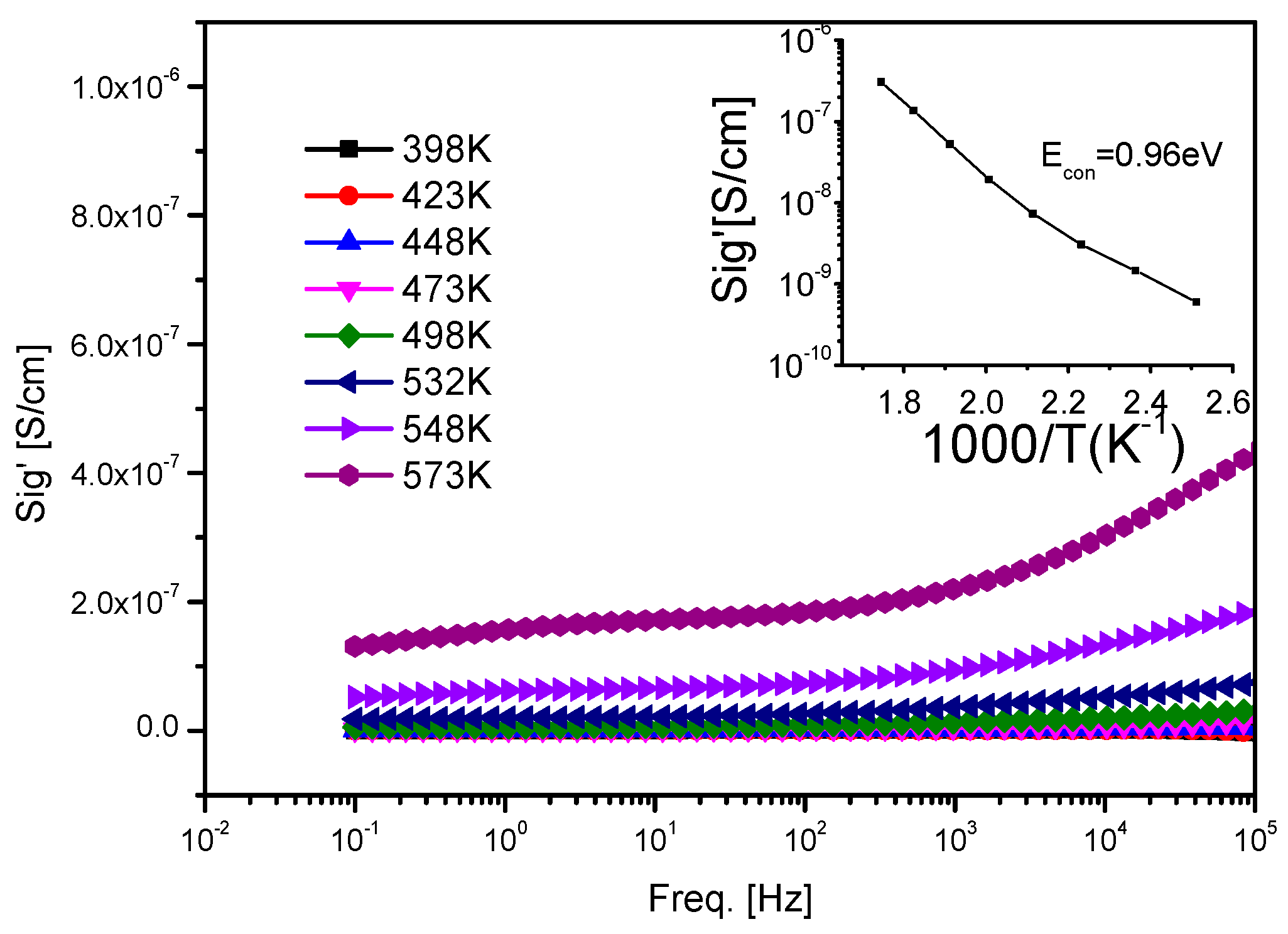
© 2018 by the authors. Licensee MDPI, Basel, Switzerland. This article is an open access article distributed under the terms and conditions of the Creative Commons Attribution (CC BY) license (http://creativecommons.org/licenses/by/4.0/).
Share and Cite
Wang, H.; Li, Q.; Wang, C.; He, H.; Yu, J.; Xu, J. Growth and Dielectric Properties of Ta-Doped La2Ti2O7 Single Crystals. Crystals 2018, 8, 113. https://doi.org/10.3390/cryst8030113
Wang H, Li Q, Wang C, He H, Yu J, Xu J. Growth and Dielectric Properties of Ta-Doped La2Ti2O7 Single Crystals. Crystals. 2018; 8(3):113. https://doi.org/10.3390/cryst8030113
Chicago/Turabian StyleWang, Hui, Qin Li, Chaoyue Wang, Huan He, Jianding Yu, and Jiayue Xu. 2018. "Growth and Dielectric Properties of Ta-Doped La2Ti2O7 Single Crystals" Crystals 8, no. 3: 113. https://doi.org/10.3390/cryst8030113



